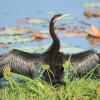 By Jim Stevenson
By Jim Stevenson
Enjoy this gallery attached. I did return yesterday afternoon to young Yellow-crowned Night-herons in the yard, along with a “pair” of Olive-sided Flycatchers in my tallest tree. Today they were joined by Yellow Warblers and Orchard Orioles, and I also spooked a Great Horned Owl that Kris Cannon told me summered here. Nice to be home!
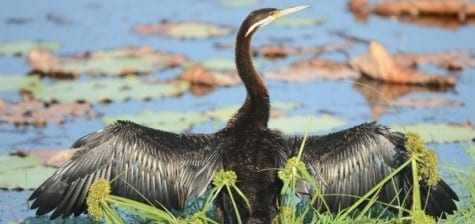
Darters are several species of fish-eating birds found around the warmer parts of Earth. They and their cousins the cormorants lack oil glands so they sink easily to effectively chase fish underwater. One is our Anhinga but this is the Australian Darter, identified by the long, straight, dagger bill and white cheek stripe.
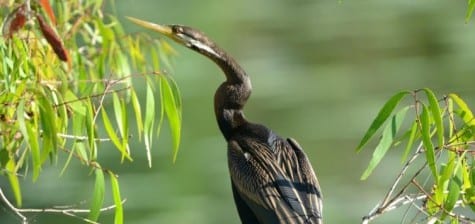
They & cormorants have totipalmate feet for powerful swimming, but perching becomes a bit of a challenge. Note the unhooked bill separating them from cormorants and the aforementioned light cheek stripe. They have a long tail, giving them the name “water turkey,” and the long neck, dubbing them “snake bird” to others.
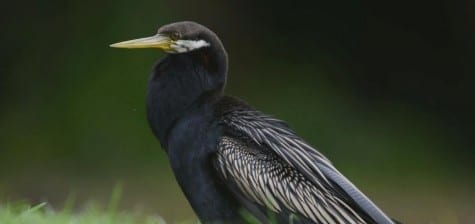
From ground level, the anhinga water turkey snake bird darter. 😉
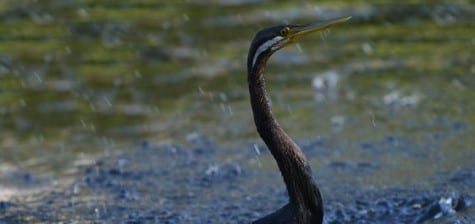
This darter became extremely agitated while swimming and couldn’t seem to take off in its sopping wet state. It left me wondering if it may have bumped into a crocodile under¬water, as I have no other plausible explanation for the behavior. Note how wide their wings are, a bit of a departure from the highly migratory Anhingas we have in the US.
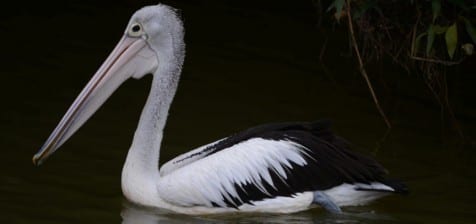
Another one of Australia’s many black and white birds, their White Pelican swims with huge, powerful feet on short, muscular legs. All the pelicans on Earth which are white feed by swimming and scooping fish in the shallows, while the dark ones dive out of the air into surface-feeding schools, like our Brown Pelican.
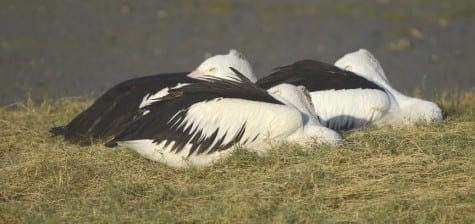
Many sea birds (and raptors) are carnivores, and need down time to digest their piscine dinners. This is why people driving on beaches, etc., need to avoid resting flocks of birds. Many beach birds also react according to the tides, but I’m not sure how that affects this species. Amazingly, their white pelicans are smaller than several other bird species, such as emu, introduced Ostrich and cassowary.
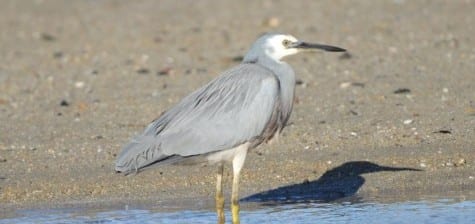
A species not unlike our Tri-colored in shape and habits is the White-faced Heron, often seen in coastal marshes and estuaries. Like so many fish-eating birds, they have white faces (at least!) so they can see into the water better for fish. This is a very common bird in New Zealand but less so in Australia, with all the wader competition.
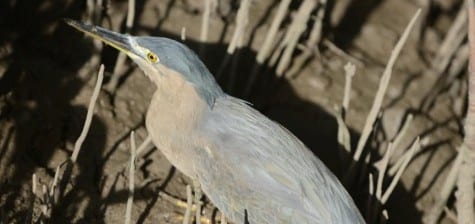
It was fun to peer down on a Striated Heron working its way through the mangroves, on mud only a light-weight creature could operate on. These are obviously related to our Green Heron, but I question whether this is the same species as South America’s Striated Heron. I’m betting this guy takes a few of those wonderful little mudskippers.
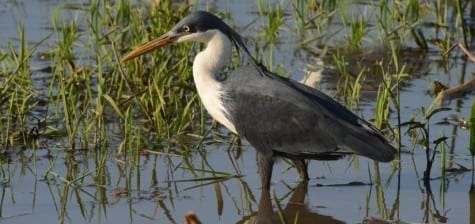
A lovely little wader is the Pied Heron, remarkably similar to the Capped Heron of the New World Tropics. They get the white needed for looking into the water but the dark on top for filtering out the UV rays of the sun. This is not a common bird, and we only found them at Fogg Dam I think!), but there were dozens there.
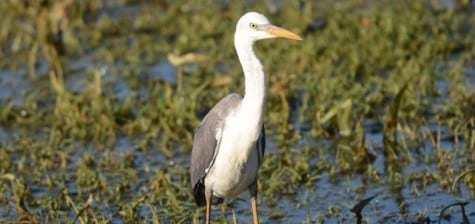
An easy bird to misidentify, the immature Pied Heron has yet to develop its dark cap of adult plumage. My hypothesis is that it’s only one year, but that’s just a guess. These birds are right at the size of a Little Blue Heron, but those are either all dark or all white, except when they are changing. Don‘t you like wading birds?
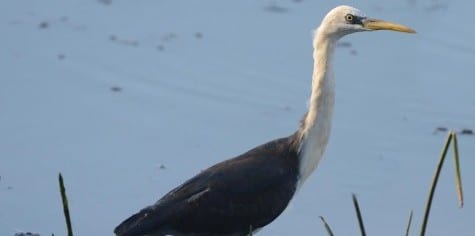
The larger White-necked Heron is Reddish Egret-sized, well named and uncommon. It reminds me of our Great Blue X Great White hybrid found in extreme South Florida, though that bird is much larger. I believe that name was Wuerdemann’s Heron, but I’m not sure. And it was only a hybrid.
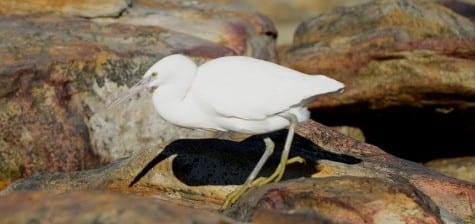
A wonderful creature found sparsely along marine waters of Australia is the Eastern Reef Heron, with a dark morph and a light morph. Gee, I wonder what that reminds you of??? They are much smaller and stockier than Reddish Egrets, though, and feed in a stalking way, rather than running after fish. Still, it’s a curious likeness.
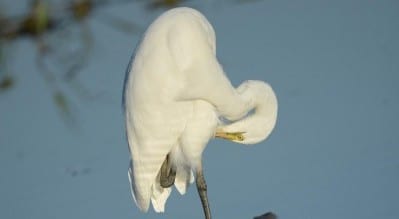
Eastern Great Egrets are much like our Great Egret but scientists decided they should be a separate species. Anyway, the bird listers love it! Many waterbirds get mites and other ectoparasites, as their bills are not as effective against these bloodsuckers as land birds. Anyway, Isure wish I could stand on one leg and scratch my ear with my other foot!
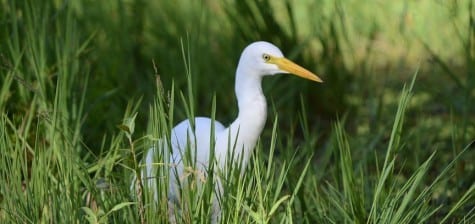
This looks like perhaps another Great Egret but notice the rounded head. This is the very common Intermediate Egret, found from salt water through the freshwater ecosystem of Australia. Like the name implies, it’s midway between the huge Great Egret and the smaller species like Green and Pied Herons, etc.
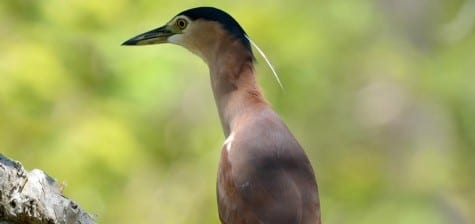
Obviously a night-heron, this is the beautiful Nankeen Night-heron, an uncommon bird in much of Australia. The short legs and bill, plus the plume all say “night-heron,” and the color adds a dimension of camouflage even better than our two species. I humorously thought the brown color was to camouflage with the smoke so commonly in the air. 😉 Looking much like young black-crowns with its large, white spots, this juvenile Nankeen Night-heron stalks like a bittern and crunches small fish and crustaceans with its strong beak. It even has short, yellow legs and a bit of yellow on the bill, like black-crowns! It was feeding within five feet of a croc (well, nine feet including his) and seemed unnerved by the basking behemoth
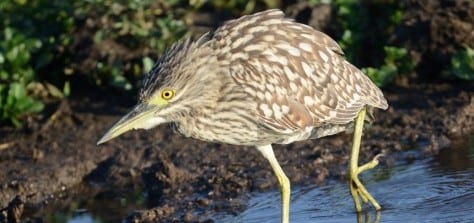
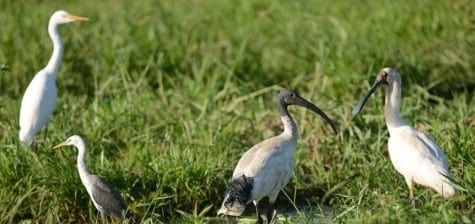
A bit of wader diversity here, with a heron (dark) and an egret* (white), plus a spoonbill and an ibis, with their diverse beaks. *Intermediate. These four birds may well feed on different target species, or even invertebrates. It is curious that waterbirds generally get along so well at the watering hole, and I presume a varied diet is the key.
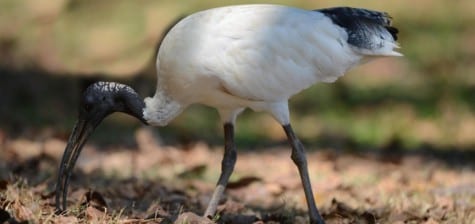
Australian White Ibis are like ours with a lot more pizzazz. They have a bit of a bustle, like cranes, and even colored, iridescent skin on the neck, behind the bare head (like our stork). These and the next ibis species are quite terrestrial in their feeding habits, with the shorter ibis bills being the more terrestrial.
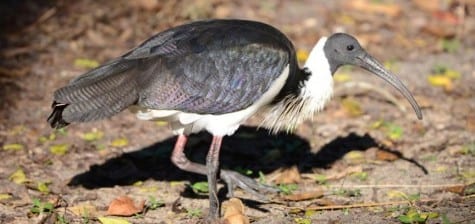
The Straw-necked Ibis is a strongly ornamental bird with a fully iridescent back and shag on its neck. I don’t believe they probe much into the dry ground, but the length is handy when they do feed around the water. Also, they appear to have less webbing than many ibis, a sign of their terrestrial nature.
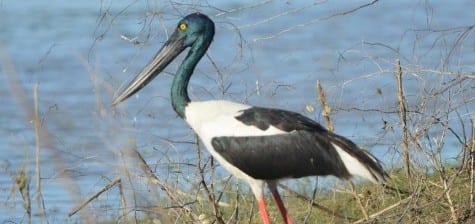
“Jabiru” is actually a Black-necked Stork, with a canoe-sized beak. The name “jabiru” is correctly used for the monstrous, white stork in Tropical America, even larger than this avian dinosaur. Can you imagine what they can do to small prey items with that bill? The curious green neck and head is curiously offset by the bright legs, and the yellow eye.
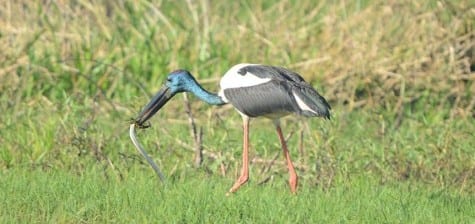
I believe this “jabiru” (as they call it) has grabbed a file snake, a common serpent of the marshes. File snakes are also caught by Aborigine women who wade barefoot through the marsh, stepping on them and killing them by biting their head. OMG! They don’t kill the snake with their bill, but rather swallow it and suffocate the poor reptile. Bad bird! Royal Spoonbills are the typical white of most spoonbills, except our lovely Roseates. Their yellow brow and slight plume add a bit, but this isn’t much too (literally) write home about. You can see the depressed shape of the beak, which they swish back and forth in the water while foraging for small fish and invertebrates.
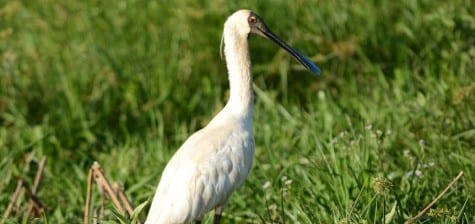
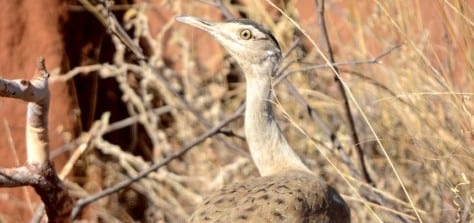
A huge bird of the dry country is the Australian Bustard, a turkey on steroids. They stomp over dry outback ground and grab small animals and dig up plant material like our cranes do. And them getting airborne is like a B1 Bomber taking off, though they’re surprisingly strong fliers. This particular bird was sure tame!
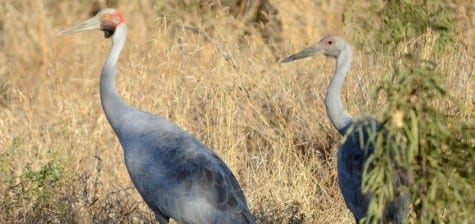
Two species of cranes are found in northern Australia, with these Brolga being the most common. Note the young on the right and the dewlap under the chin of the adult. They have loud, clattering calls not unlike our Sandhills, and the color is about “just right.” At this moment, in Outback Australia, November seems a long way away, but the sandies are coming!
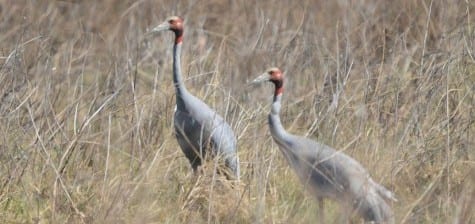
Tougher to find are Sarus Cranes, with the red extension on the neck. They live in many of the same fields as Brolga, and I honestly don’t know exactly how they are ecologically separated from Brolga. Note the larger size of the male on the left, and the list of enemies they will fight off to protect their young is astounding. I know of one who pecked a King Brown to death. Wowsers.
(published 8/26/2014)

 Posted in
Posted in 























